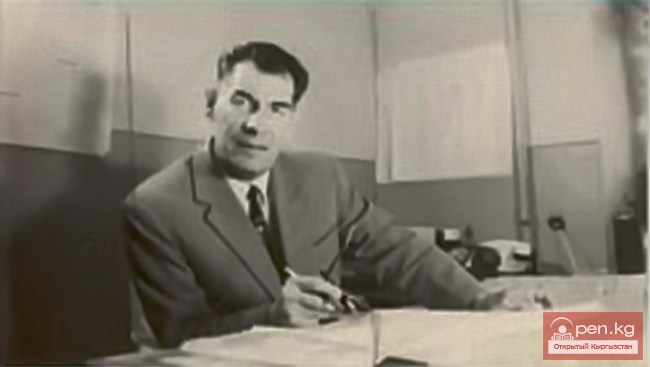Fedor Romanovich Semernin
Allow us to say a few words about another remarkable person. Fedor Romanovich Semernin has been studying the history of the city of Osh for over 40 years. During this time, he has accumulated no less than two thousand archival and historical materials about the workers of Osh who contributed to the establishment and development of the city.
Thanks to his efforts, more than 1,400 units of historical materials have been transferred to the Osh State Regional Archive for permanent storage, including 800 photographs and about 400 archival excerpts on more than a hundred residents of the city of Osh. Semernin F. R. is not only a native of Osh, having worked in the city until 1933, but he is also one of the few sports enthusiasts who, in 1926, established the Council of Physical Culture and Sports, laying the foundations for the development of sports in Osh and the Osh region. From an ordinary physical culture enthusiast, he grew into a multiple record holder of Kyrgyzstan, Uzbekistan, and Central Asia in athletics. Diplomas of F. Semernin's sports achievements over 24 years of active participation in sports can be found in the Sports Museum in Bishkek, in the Olympic Glory Museums, and the Ministry of Defense of Uzbekistan in Tashkent.
Working since 1928 as the deputy chairman of the athletics section of the Osh City Physical Culture Society, Semernin F. R. was well acquainted with all the prominent "pioneers" of sports in the city of Osh and the Osh region, gathering data on their sports achievements and publishing articles about them in the periodicals of Kyrgyzstan and Uzbekistan. Among the extensive list of publications, the following are undoubtedly noteworthy: about the first prominent military, economic, cultural, and other figures who participated in the establishment of the city (about 20 newspaper issues); about the first prominent athletes and organizers of physical culture and sports in Osh and the region (8 newspaper issues); about the development of various sectors of the national economy of Kyrgyzstan (more than 20 issues); a collection of newspapers about the sports biography of Semernin F. R. himself (more than 30 newspapers); a list of the first prominent athletes of Osh and the Osh region, etc. Despite the fact that Semernin F. R. currently lives in Tashkent, he has not lost touch with the city of Osh and continues to gather archival materials.
In conclusion of this section of the book, it is worth noting that one of the memorial sites in the city of Osh is the Brothers' Grave of those who fell in the struggle for Soviet power in the city. More than 100 people were buried there from 1919 to 1933, including: the head of the Osh police B. Sultanov, deputy head of the Osh regional OGPU T. F. Khokhlov, commander of the cavalry division M. T. Kolesnik, party and Komsomol workers, and teachers Osmonov L., L. Tillyabaev, K. Akhmedov, A. Yusupdzhanov, V. Zemkov, M. Mikhailichenko, N. Lintz, P. Ya. Osadchiy, Andreyev, Boldorov, and others. In 1974, a monument with an eternal flame was opened near the House of Culture on a slab of black marble. The words cast in bronze on the stele read: "Eternal glory to those who fell and to the struggle for Soviet power" (Author of the monument - R. K. Tsoy).
Ganizhan Davydov
















































